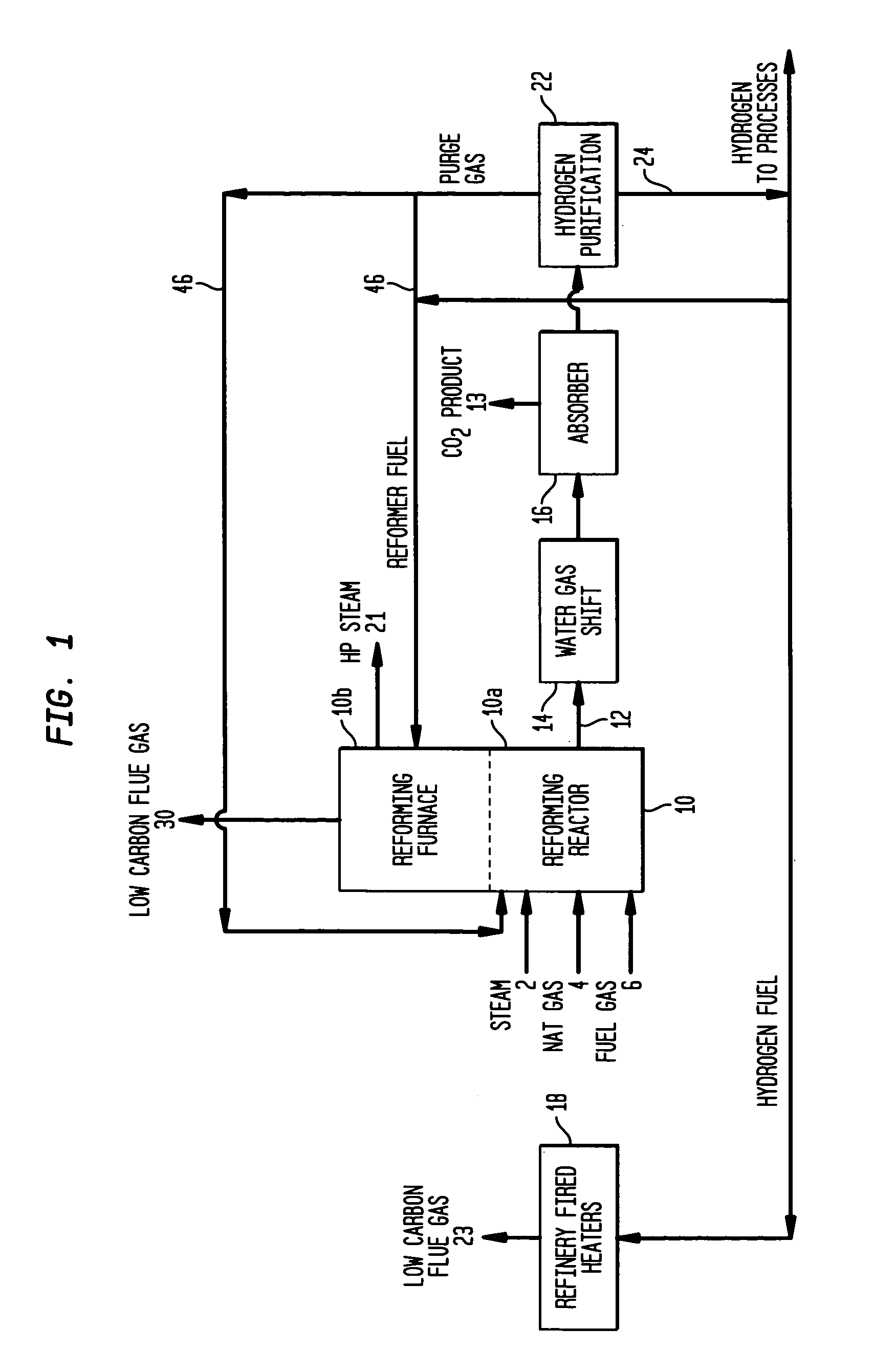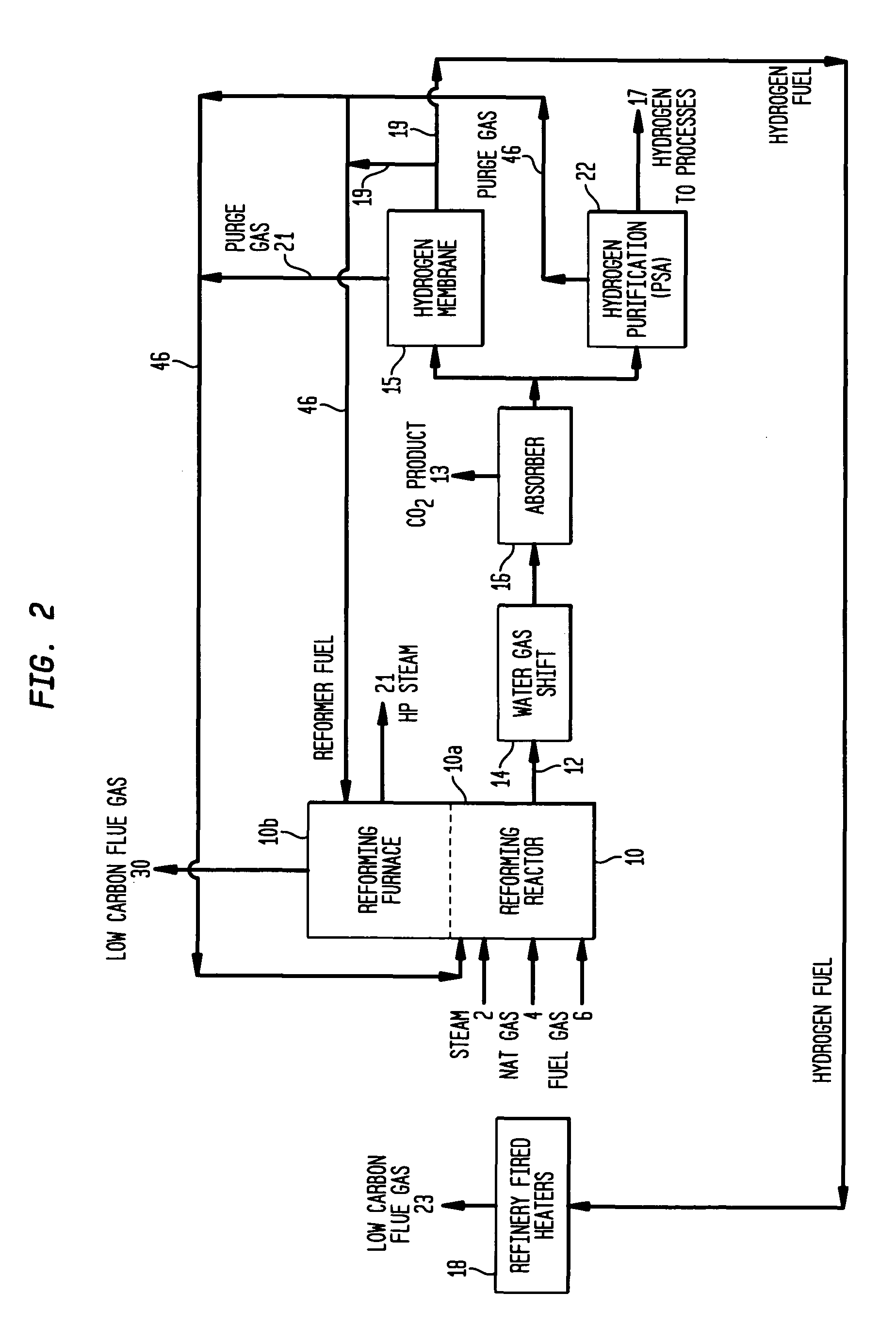Reduction of greenhouse gas emission from petroleum refineries
a technology of petroleum refinery and greenhouse gas emission, which is applied in the direction of climate sustainability, chemistry apparatus and processes, and petrochemical industries, etc., can solve the problems of high capital investment and operating costs primarily related to air separation plants, uneconomical practicability, and high capital investment and operating costs . the effect of reducing the carbon dioxide emissions of the plan
- Summary
- Abstract
- Description
- Claims
- Application Information
AI Technical Summary
Benefits of technology
Problems solved by technology
Method used
Image
Examples
example
[0042]The following example cases are based upon a typical North American refinery which is currently operated without CO2 capture. The refinery processes 100,000 BPSD of crude with gasoline and diesel being the primary products and other environmentally acceptable liquids also produced. The refinery includes crude atmospheric and vacuum distillation, an FCC Unit, catalytic reforming unit, hydrotreater units, and a natural gas fed SMR Unit.
[0043]The base case with no CO2 capture is outlined in Table 1 and also includes estimated CO2 emissions as reported in the literature. The total CO2 emissions are 115 Lb / Bbl of refinery feed and result in 5,750 STPD of CO2 being emitted to the atmosphere. The SMR unit is fed with natural gas and provides 30.5 mM SCFD of hydrogen. The CO2 emissions are segregated into three sources: from the SMR Unit (862 STPD), from the FCC Unit (1,000 STPD) and from the plant fired heaters (3,888 STPD). It is assumed that the CO2 emissions from the FCC regenerat...
PUM
| Property | Measurement | Unit |
|---|---|---|
| temperatures | aaaaa | aaaaa |
| temperatures | aaaaa | aaaaa |
| temperatures | aaaaa | aaaaa |
Abstract
Description
Claims
Application Information
 Login to View More
Login to View More - R&D
- Intellectual Property
- Life Sciences
- Materials
- Tech Scout
- Unparalleled Data Quality
- Higher Quality Content
- 60% Fewer Hallucinations
Browse by: Latest US Patents, China's latest patents, Technical Efficacy Thesaurus, Application Domain, Technology Topic, Popular Technical Reports.
© 2025 PatSnap. All rights reserved.Legal|Privacy policy|Modern Slavery Act Transparency Statement|Sitemap|About US| Contact US: help@patsnap.com



